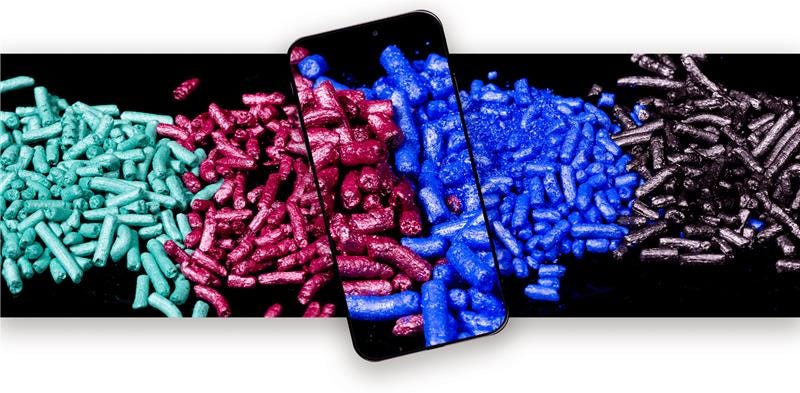How To Formulate Lipsticks, Lip Glosses, Lip Balms and Lip Lacquers
Lip formulations remain a core focus in color cosmetics, evolving to meet consumer expectations around performance, feel, and appearance. Whether creating a nourishing balm, a high-shine gloss, or a pigment-rich lacquer, formulators must carefully balance aesthetics with function.
Each type of lip product presents a distinct set of technical requirements. For instance, glosses demand smooth application and shine without stickiness, while lacquers require precise pigment dispersion and durable film-forming systems. Even seemingly simple balms must provide hydration, barrier support, and a comfortable wear experience.
Ingredient Categories Used in Lip Formulations
Formulating effective lip products requires selecting ingredients that contribute to structure, feel, visual appearance, and long-term performance. Below are the primary ingredient categories typically used in lip balms, glosses, and lacquers—along with their roles and formulation considerations.
Film Formers and Gloss Agents
Film-formers create a continuous layer on the lips, improving wear resistance and helping the product stay in place. Gloss agents contribute to visual shine and surface reflectivity.
- Examples: Polybutene, isohexadecane, hydrogenated polyisobutene
Key considerations: Balance between flexibility and film integrity to avoid cracking or excessive transfer
Texture and Rheology Modifiers
Rheology modifiers define how the product behaves during application and how it feels on the lips. They help adjust viscosity, control pigment suspension, and influence overall payoff.
- Examples: EstoGel Green, EMC30, waxes (e.g., beeswax, synthetic wax), hydrogenated castor oil
- Key considerations: Thickeners must be compatible with high-oil systems; gels can help stabilize pigments in anhydrous formats
Emollients and Conditioning Agents
Emollients soften and smooth the lips while enhancing spreadability. In balms and hybrid lip products, they also serve as carriers for active ingredients or gloss-enhancing agents.
- Examples: Caprylic/capric triglyceride, shea butter, silicone alternatives, esters (e.g., C12–15 alkyl benzoate)
- Key considerations: Emollient volatility and oxidative stability affect both product feel and shelf life
Pigments and Effect Additives
Pigments provide color, while effect additives can deliver light-scattering, color-shifting, or glossy finishes. The choice of pigment type (surface-treated vs. untreated) impacts dispersion stability and payoff.
- Examples: Arcopearl® FEHD, Arcopearl® Sparkles, Arcopearl® Pure Collection, Pearlflakes, Bismica and Bismica Max pigments
- Key considerations: Particle size and treatment impact texture, stability, and visual uniformity in the final product
Formulation Considerations by Product Type
While lip products share some common ingredients, each format—balm, gloss, or lacquer—requires a tailored formulation strategy. Below are the distinguishing characteristics, structural requirements, and formulation tips for each category.
Lip Balm
Lip balms are primarily designed to moisturize and protect the lips, often with a subtle sheen or tint. Their structure relies on a balance of waxes, oils, and butters to provide occlusivity and spreadability.
- Structure: Typically anhydrous systems with a wax/oil base
- Key Ingredients: Natural butters (e.g., shea, cocoa), waxes (e.g., beeswax, candelilla), emollients, light reflectors
- Formulation Tips:
- Use low-melting waxes to improve payoff
- Avoid grittiness by selecting finely milled powders or pearls
- Consider multifunctional ingredients to provide both hydration and sensory appeal
Lip Gloss
Lip glosses prioritize shine and comfort. They are usually oil-based or gelled oil systems with a semi-viscous texture. A good gloss should offer high reflectivity, smooth glide, and low tack.
- Structure: Gelled oil or polymer-thickened systems
- Key Ingredients: EstoGel Green, polybutene, EMC30, gloss-enhancing esters
- Formulation Tips:
- Balance gelling agents and emollients to minimize stickiness
- Use pigment dispersions or pre-treated pigments for clarity and stability
- Test compatibility of pearls with the base to avoid clouding
Lip Lacquer / Liquid Lipstick
These products are pigment-rich with long-wear claims and bold color payoff. They often require robust film-forming systems to prevent transfer and fading.
- Structure: High-viscosity systems with film-formers and volatile carriers
- Key Ingredients: Film-forming polymers, volatile emollients, pigment dispersions, rheology modifiers like EMC30
- Formulation Tips:
- Pre-disperse pigments in compatible oils to avoid settling
- Select film-formers that maintain flexibility to avoid cracking
- Include plasticizers or conditioning agents to maintain comfort during wear
Example Formulations
Final Notes for Cosmetic Chemists
When formulating lip products, precision matters—both in ingredient compatibility and in the user experience you’re designing for. Small adjustments in oil composition, pigment dispersion, or gelling agent levels can significantly alter texture, payoff, and long-term stability.
A few closing considerations:
- Prototype and iterate: Even with well-established ingredient systems, performance can shift based on ratios, processing conditions, and packaging format. Multiple iterations help fine-tune application and wear characteristics.
- Evaluate sensory on skin and lips: In-vitro texture testing can be useful, but panel testing—especially for stickiness, glide, and afterfeel—remains essential in product optimization.
- Stay current with regulatory guidelines: Color additives and preservatives for lip products are subject to stricter scrutiny in many regions. Ensure all pigment choices meet the required global safety standards.
- Watch for emerging trends: The lip category is increasingly intersecting with skincare. Ingredients that offer hydration, barrier repair, or subtle plumping benefits are gaining traction in hybrid lip formats.




